 |
 |
 |
| |
EXTRA-CVD: A Nurse-led Intervention to Extend the
HIV Treatment Cascade for Cardiovascular Disease Prevention
|
| |
| |
CROI 2024 March 3-6 Denver
Chris Longenecker, MD
Director, Global Cardiovascular Health Program Associate Professor of Medicine
Department of Global Health
Department of Medicine, Division of Cardiology University of Washington
Program abstract
Background: Despite higher atherosclerotic cardiovascular disease (ASCVD) risk, people with HIV (PWH) experience unique barriers to ASCVD prevention care. Using a human-centered design approach, we developed EXTRA-CVD-a nurse-led multicomponent strategy of care coordination, home blood pressure monitoring, evidence-based treatment algorithms, and electronic health records tools to improve blood pressure and cholesterol management in 3 HIV clinics in the United States.
Methods: We conducted a randomized controlled trial among 298 PWH with suppressed HIV-1 viral load on antiretroviral therapy with comorbid hypertension and high cholesterol. Participants were stratified by site and randomized 1:1 to the EXTRA-CVD strategy or general health education control. Change in systolic blood pressure (SBP) was the primary outcome assessed at baseline, 4, 8, and 12 months. Change in non-HDL cholesterol was secondary. Primary intention-to-treat analyses were conducted using linear mixed models, with pre-specified moderation analyses by natal sex, baseline ASCVD risk, and site.
Results: Mean (SD) age was 58(9.6) years; 21% were female and 66% were non-white race. Baseline mean (SD) SBP was 135(19) mmHg and non-HDL cholesterol was 140(45) mg/dL. Half were currently prescribed 2 or more antihypertensive drugs and two-thirds were on a statin at baseline. At 12 months, participants assigned to EXTRA-CVD had 4.2mmHg (95% CI 0.3-8.2; p=0.04) lower SBP and 16.9mg/dL (95% CI 8.6-25.2; p<0.001) lower non-HDL compared to controls
(Figure). Non-HDL change was driven more by a 29.5mg/dL reduction in triglycerides (95% CI 5.3-53.7; p=0.02), rather than LDL [9.6 mg/dL (95% CI -6.3-25.5; p=0.24)]. EXTRA-CVD participants had higher odds of reaching treatment goal for SBP [<130/80 mmHg; OR 2.9(95% CI 1.0-8.3; p=0.05)] and for non-HDL [<100mg/dL for high-risk and <130mg/dL for others; OR 7.3(2.3-23.3; p<0.001)]. There was some evidence that the SBP effect was greater in females compared to males (11.8 mmHg greater at 4-months, 9.6 mmHg at 8-months, and 5.9 mmHg at 12-months; overall joint test p=0.06), but other intervention effects were similar by sex (all p>0.3). Intervention effects were not moderated by baseline ASCVD risk or site (all p>0.2).
Conclusion: A nurse-led multi-component strategy lowered blood pressure and cholesterol over 12 months in diverse PWH with these comorbid ASCVD risk factors. These results should inform future implementation of multifaceted ASCVD prevention programs for PWH in the United States.
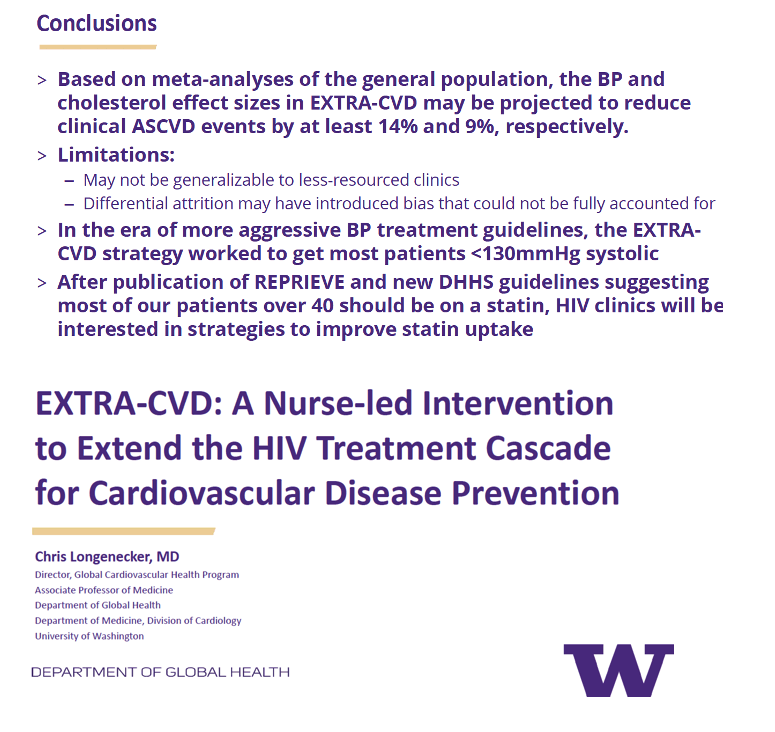
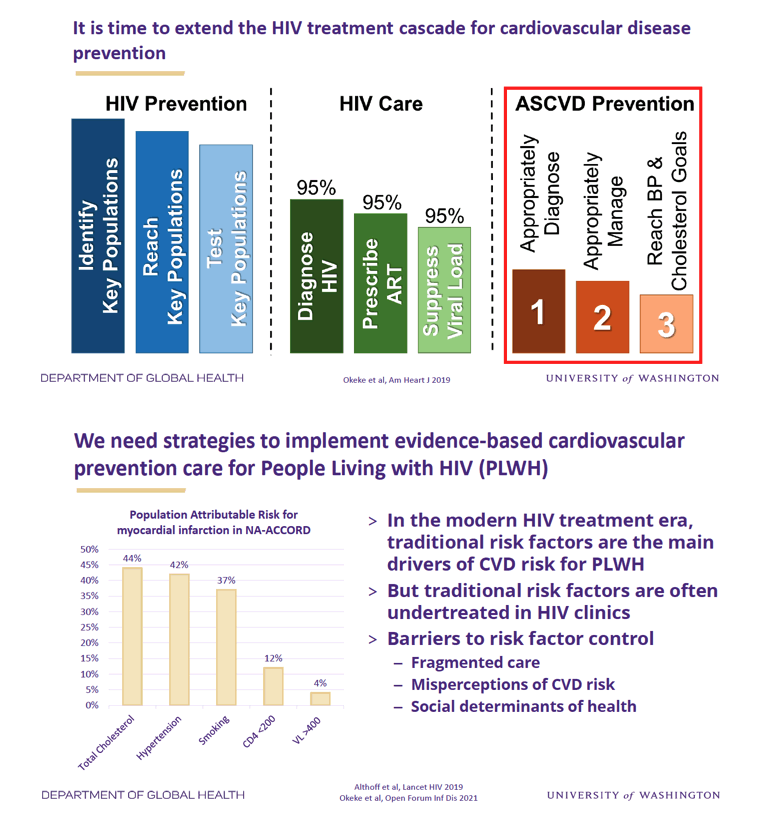
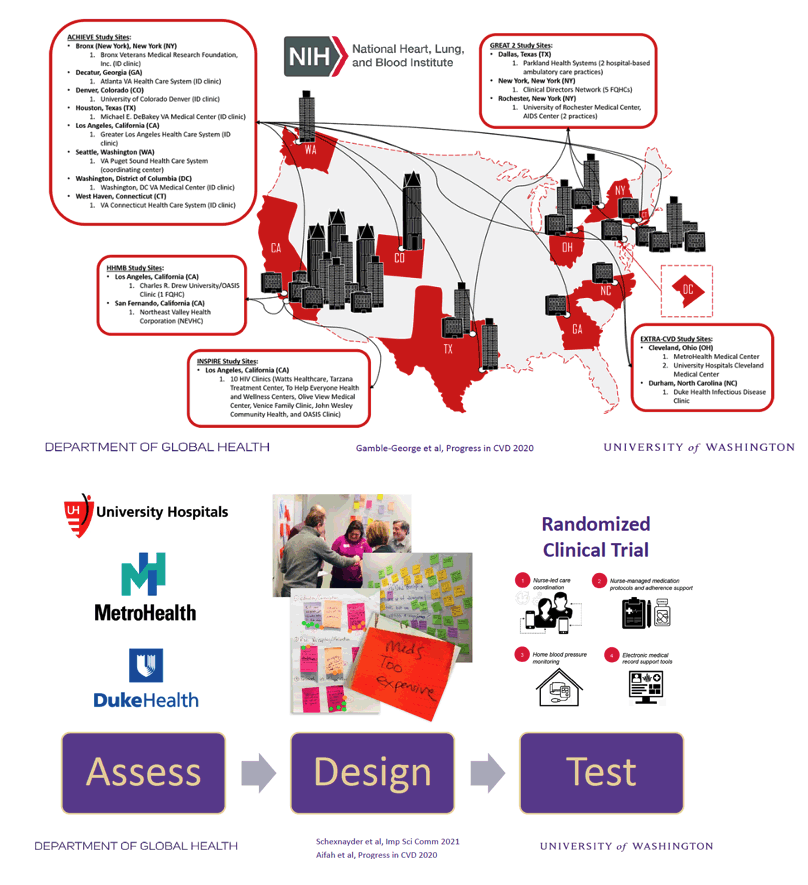

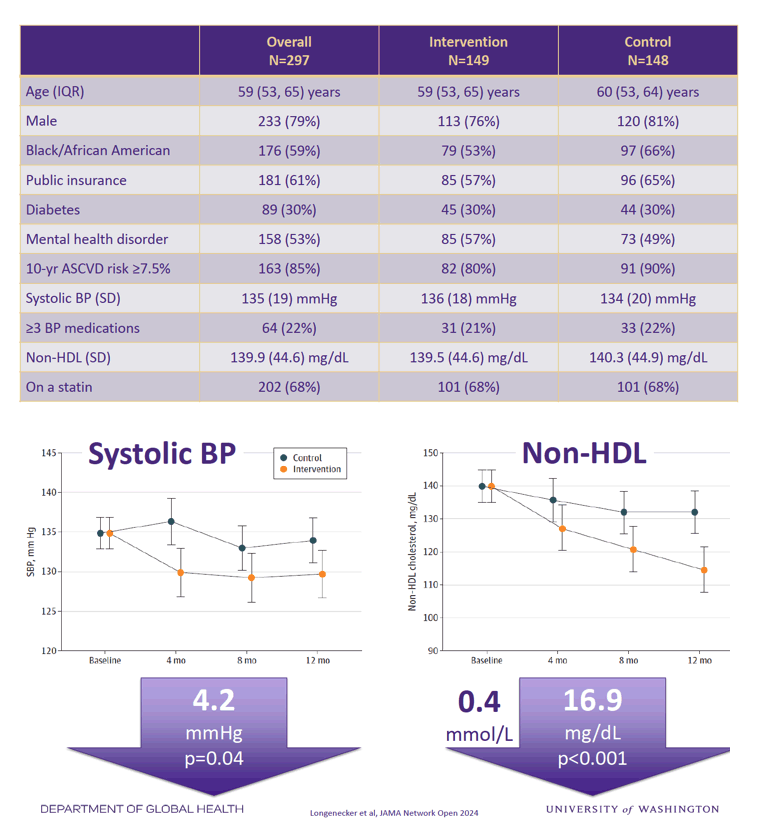
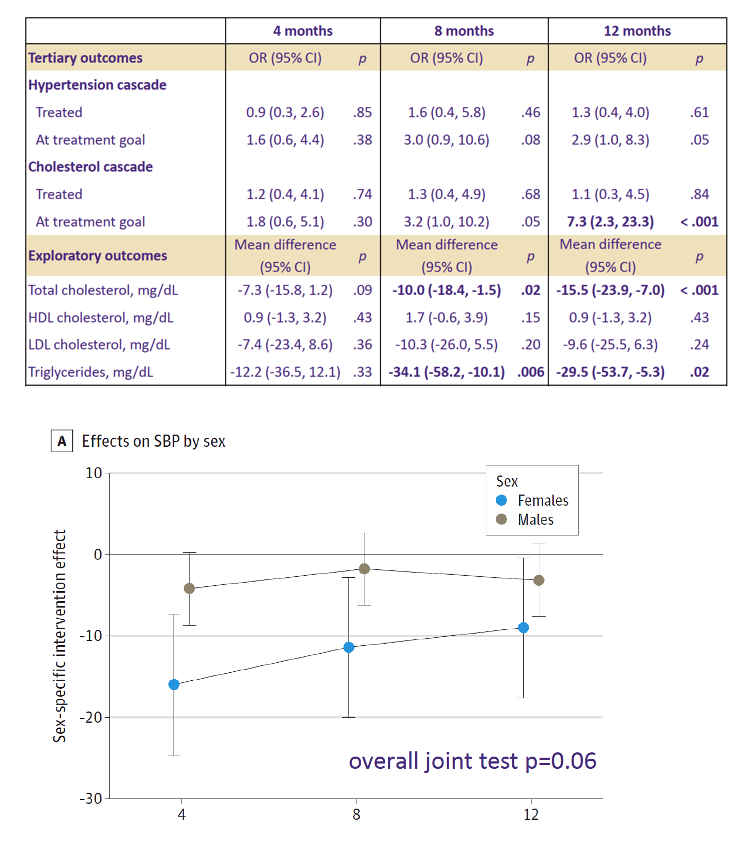
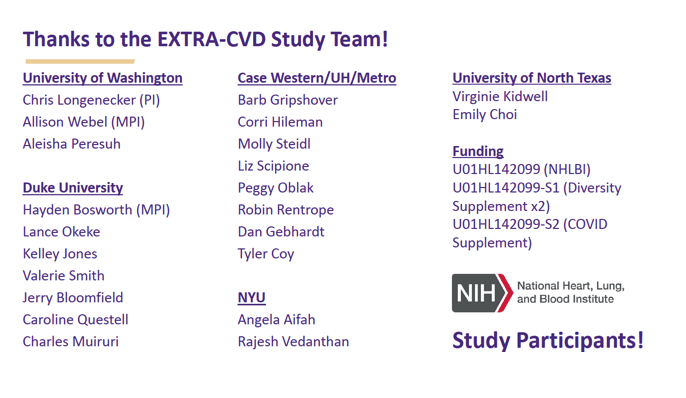
|
| |
|
 |
 |
|
|